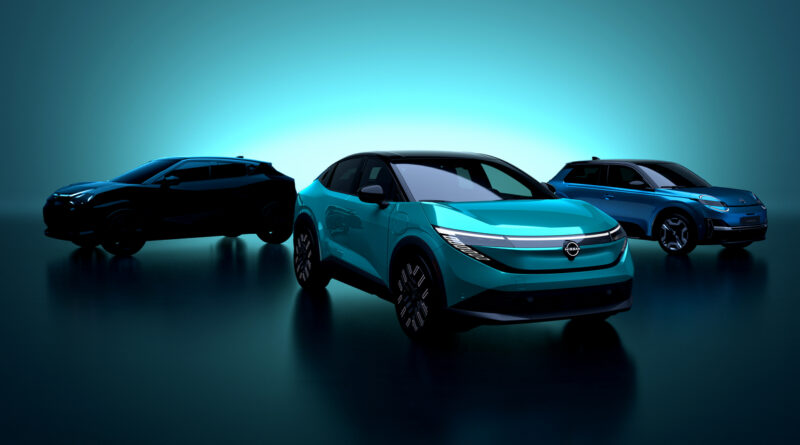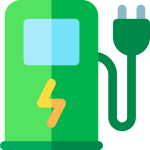
Australia’s electric vehicle market continues to accelerate, with fresh entrants circling the local market and established names consolidating their positions. This week’s headlines included a potential Australian launch for China’s Dongfeng Forthing brand, the much-anticipated arrival of the Nissan Ariya, and Polestar’s production-ready Polestar 5 reveal – each development reflecting a maturing and increasingly competitive EV landscape. Meanwhile, the Tesla Model Y remains Australia’s best-selling EV, and a growing suite of genuinely affordable models is broadening consumer access.
New EV brands and models
Dongfeng Forthing: a new contender
Dongfeng Motor Corporation’s Forthing brand has signalled intent to enter Australia, targeting a debut with a mid‑size SUV by the end of 2025. The company is actively seeking a local distributor. If a distribution partner is secured, expect a process of right‑hand‑drive modifications, Australian Design Rules (ADR) homologation and local warranty/aftercare arrangements before any showroom rollout.
What this would mean for buyers and dealers: Forthing’s entry would expand choice and price pressure among mainstream EVs, particularly if the brand brings its current strategy of aggressive specification and competitive pricing to the market. Challenges will include proving local service capability, parts supply and adapting vehicles to Australian conditions and safety standards.
Nissan Ariya: online orders opened, showroom arrival imminent
Nissan confirmed the Ariya will arrive in showrooms around September 2025. Online ordering opened on 29 July 2025, with an entry-level RRP of $55,840 plus on‑road costs. Positioned as a mid‑sized zero‑emissions SUV, the Ariya is pitched at private buyers and fleet customers seeking an established maker’s EV package – competitive equipment levels, recognised dealer networks and predictable ownership costs underpin its appeal.
Polestar 5: production‑ready and headed for Australia
Polestar unveiled the production‑ready Polestar 5 at the Munich motor show: a high‑performance, 650 kW “super‑sedan” that targets buyers in the premium performance EV segment. Polestar expects the car in Australian showrooms by mid‑2026. Anticipate limited volumes and a premium price point that will see the Polestar 5 compete with high‑end offerings from Tesla and other EV performance marques.
Market trends and what they mean for Australia
Tesla Model Y continues to lead
Despite mounting competition, the Tesla Model Y remains Australia’s best‑selling electric vehicle. The Model Y’s dominance is supported by Tesla’s brand recognition, nationwide Supercharger network and broad product availability. However, market share dynamics are shifting as more mainstream and affordable EVs enter the market and as legacy manufacturers push harder into electrification.
Affordable EVs widening access
A meaningful change this year has been the rise in genuinely affordable new EVs. Models such as the BYD Dolphin, GWM Ora and MG4 Excite are available in Australia for under $40,000, helping to remove a major barrier to uptake. These cars typically offer practical urban ranges, modern infotainment and safety features, and represent a pivotal step in transitioning mass‑market buyers to EVs.
Sales growth and market outlook
Electric vehicle sales in Australia are projected to reach record levels in 2025, with EVs expected to account for more than 25% of new car sales by year’s end. Key drivers include:
- Broader model choice across price points, from budget city cars to premium performance sedans.
- Corporate and government fleet electrification commitments.
- Improved charging networks and faster public chargers in urban corridors and regional centres.
- Ongoing price competition from Chinese brands and downward pressure on entry‑level EV pricing.
Supporting trends: charging, supply and the used market
Charging infrastructure is expanding rapidly thanks to combined federal, state and private investment. Operators are rolling out higher‑capacity fast chargers along major routes and boosting urban accessibility. At the same time, battery recycling and second‑life storage projects are scaling up, addressing end‑of‑life concerns and strengthening sustainability credentials.
The used EV market is also maturing. A growing supply of proven, low‑kilometre, late‑model EVs is stabilising residual values and making EV ownership more accessible to budget‑conscious buyers. Still, prospective buyers should consider warranty transferability, battery health and local servicing availability.
Challenges to watch
- Homologation and right‑hand drive conversions remain a timeline risk for some new entrants.
- Regional charging gaps persist; infrastructure rollouts do not yet uniformly cover all rural and remote communities.
- Grid constraints in some areas could become a planning issue as household and fleet charging demand grows.
- Consumer education continues to be necessary – especially around home charging costs, real‑world range and long‑term running costs.
Conclusion
The week of 25 September 2025 underlines how dynamic and competitive Australia’s EV market has become. New entrants like Dongfeng Forthing may widen choice and increase downward pricing pressure, established manufacturers such as Nissan are broadening mainstream appeal with models like the Ariya, and premium brands like Polestar are sharpening the high‑performance end of the market. Combined with the continued strong sales of the Tesla Model Y and an expanding catalogue of affordable EVs, Australia is on course for substantial EV uptake in 2025 and beyond. For buyers, the net result is more choice, better value and clearer pathways to electrified ownership – though practical challenges around infrastructure, regulation and aftercare remain important considerations.
FAQs
Will Dongfeng Forthing definitely launch in Australia?
No decision has been finalised. Dongfeng Forthing is actively seeking a local distributor and has expressed intent to introduce a mid‑size SUV here by late 2025. Any launch will depend on securing distribution, ADR compliance, right‑hand‑drive adaptations and a solid aftersales network.
When and how can I order a Nissan Ariya in Australia?
Nissan opened online orders for the Ariya on 29 July 2025. The vehicle is due in Australian showrooms around September 2025, with an entry RRP of $55,840 plus on‑road costs. Check Nissan Australia’s website and authorised dealers for current availability and variant specifications.
Is the Polestar 5 coming to Australia, and when?
Yes – Polestar has revealed the production‑ready Polestar 5 and expects deliveries to Australia by mid‑2026. Expect limited volumes and a premium price positioning; bookings and detailed pricing will be announced through Polestar’s local channels.
Why is the Tesla Model Y still the best‑selling EV in Australia?
The Model Y benefits from Tesla’s brand strength, a comprehensive Supercharger network, consistent supply relative to some rivals and a product mix that appeals to mainstream buyers. While competition is increasing, these advantages have sustained its market lead.
Are there genuinely affordable EVs available in Australia for under $40,000?
Yes. Models such as the BYD Dolphin, GWM Ora and MG4 Excite are examples of new EVs retailing below $40,000, offering viable range and features for many buyers and helping push EV uptake beyond early adopters.
Will EV sales really reach over 25% of new car sales in 2025?
Market forecasts in 2025 indicate EVs are likely to exceed 25% of new vehicle sales, driven by more models across price segments, fleet electrification, and improved infrastructure. Projections depend on supply stability, consumer confidence and ongoing policy support.
About EV Evolution
EV Evolution is the leading online platform dedicated to Australian electric vehicle owners and enthusiasts. We foster a vibrant community, delivering essential EV news and insights, and enhancing user engagement through our innovative, AI-powered chatbot for dynamic discussions. Our mission is to empower Australian electric vehicle owners and enthusiasts by fostering a vibrant, AI-driven online community that connects, informs, and advances the nation’s electric vehicle landscape.




